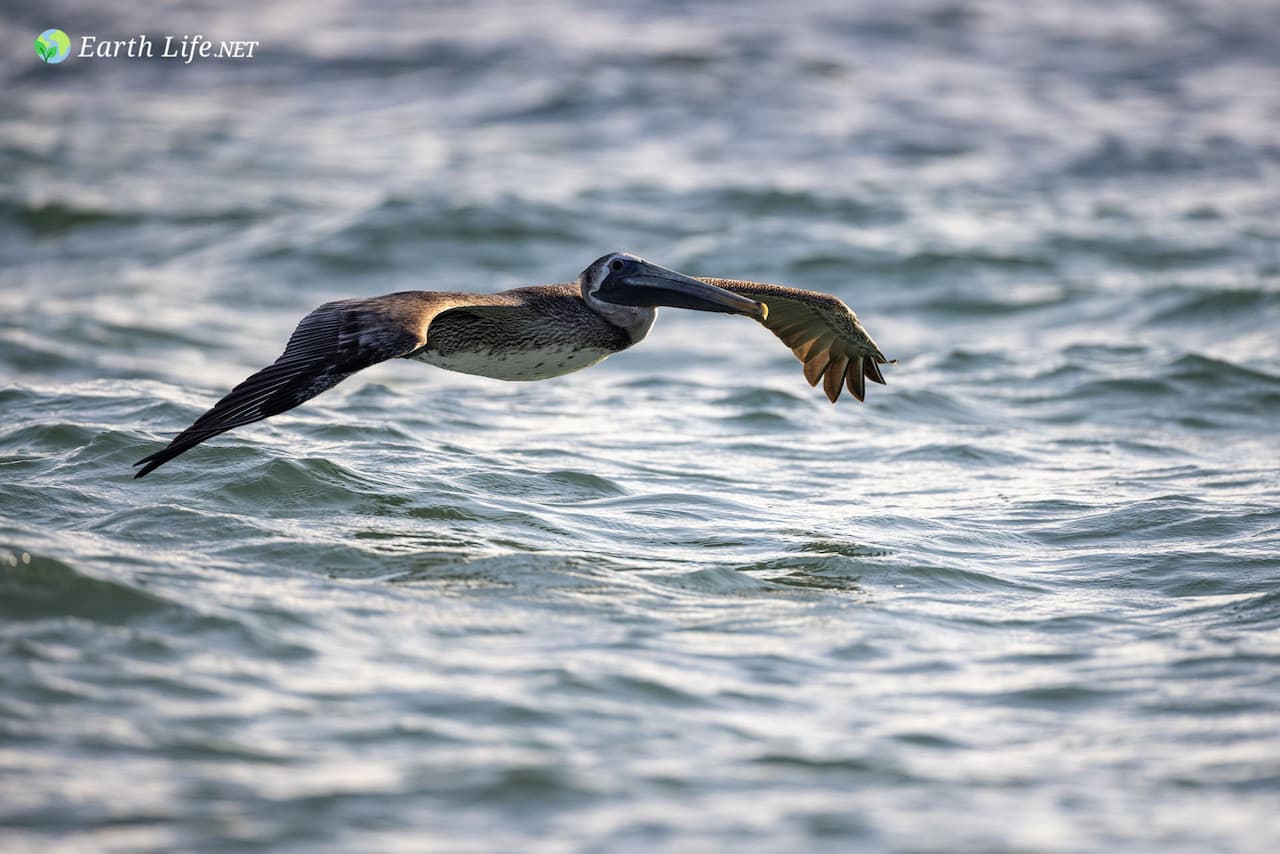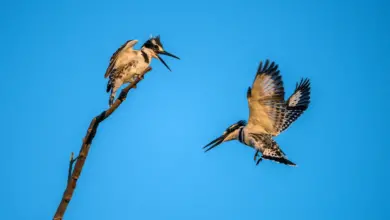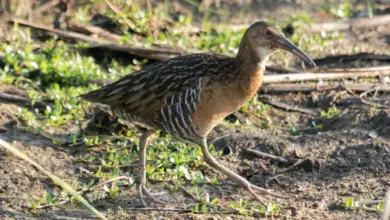Why Do Birds Fly Low Over Water? Explained!
Why Do Birds Fly Low Over Water?
If you have ever been sitting near the water, you must have witnessed it. Terns, skimmers, and pelicans at sea, or swifts and swallows over rivers, flying low just above the water’s surface at quite a high speed
As you watched their skillful maneuvering and the way they glided so close to the water but without a splash, you must have been wondering what they’d been up to.
Were they drinking? Well, at a freshwater body, that might have made sense, but what about the sea? Perhaps they were feeding – but is that even possible at that speed?
Let’s just glide with the birds now and discover the mechanisms that make this behavior possible.
Why Do Birds Glide Over Water?
We sort of take birds’ flight for granted, witnessing them flapping their wings or gliding, but rarely wonder about the complexity of their movements.

No wonder many people are surprised to learn that the physics behind bird flight is much more complex than mere wing flapping – there are many forces at play.
The bird’s capability of gliding or skimming is tightly connected to the aerodynamic phenomenon called the ground effect.
What Is the Ground Effect?
When a bird (or a plane, for that matter) flies really low over a surface in a full wingspan, the airflow patterns around the wing change; the air is channeled between the wings and the surface; thus, drag and air resistance against the wing are reduced.
The effectiveness of the ground effect increases as the bird nears the surface.
Outside of the animal realm, the ground effect is well-known by pilots. In fact, you might have felt it yourself during a plane landing in the form of a surprising, lively sensation just before touchdown.
Due to the reduced resistance, birds spend much less energy on maintaining flight when using the ground effect. They sort of glide on an air cushion, having to flap their wings much more rarely than during an active flight.
Do Birds Skim Over Land Too?
If we know that any flat surface can cause the ground effect, why do birds glide only over the water surface and not over the land?
Although it would be possible to take advantage of the same phenomenon on land, in reality, it would be impractical and even downright dangerous.
Unlike a clear water surface, the land cover is full of objects to collide with – especially at high speeds. Obstacles are at every step (or wing flap) – just think of all the grass, the trees, the rocks – and let alone the man-made ones.
Free of the ability to hold objects at all, the water bodies are the only safe areas to use the ground effect efficiently.
What Birds Use the Ground Effect To Glide?
The successful use of the ground effect is directly related to the relative wing length, so the birds with wide, narrow wings reap the greatest benefits of this force. It may be more accurate to conclude that they have the right wings because they were shaped by evolution to spend their lives near (and over) the water bodies.
Let’s meet some of the bird species that readily use the ground effect.
Skimmers
Skimmers (Rynchopidae) are a water bird family consisting of three species. The name says it all because these birdies literally live off skimming.
At twilight, they start feeding by gliding over calm and shallow waters with the peak of their bill cutting through the water’s surface and catching the probably-unsuspecting prey (it all happens so fast!).
Besides their finely-shaped wings, skimmers have another anatomic adaptation that enables this lifestyle. The lower portion of their bill is actually one-third longer than the upper one.
The birds fly with their beaks slightly open, letting the lower mandible cut through the water in a bladelike fashion. As soon as it touches a fish or a crustacean, the beak instantly snaps – and the dinner is ready.
The only drawback of this skimming-snapping beak contraption is that the young are heavily reliant on their parents regarding feeding because it takes a while for their beaks to mature into adult form. Until then, parents feed their kids exclusively through regurgitation.
Pelicans
Pelicans are one of the largest birds in the world. The American White Pelican has a wingspan of about 9 feet (244-290 cm, to be precise).
The elongated flying gear allows them to use the ground effect to a great extent when over water and therefore save a lot of energy – because the larger the bird’s body, the more effort it takes for them to remain in flight. That is why you can often see pelicans gliding near the shoreline.
Another moment when the pelicans use the mighty force of ground effect is landing. Landing is tricky for large birds that fly at high speed because, as plane pilots often put it, it is a controlled crash.
The ground effect helps the large bird slow down the flight before it lets its feet touch the ground, allowing for a safer and presumably more comfortable transition from flight to feet.
However, White pelicans like to locate in calmer waters – rivers, lakes, or inland saltwater bodies. On the other hand, Brown pelicans, who are commonly found at the rowdy sea, and, as you’ve already learned, the ground effect works much better over a flat surface. However, the pelicans may have another trick to help them conquer the air.
Recent research has modeled how brown pelicans use localized winds created by the waves to stay in flight via a technique called wave-slope soaring.
As Ian Stokes, a Ph.D. student in mechanical engineering at UC San Diego who developed the pelican flight model, explains: “Pelicans can fly right along the wave crest for a really long time without flapping at all. They’re basically surfing the wave; it’s pretty sweet to watch. What happens is the wave comes by, and it lifts the air in front of it, as well as creating horizontal flow, and from there we get what we call wave-induced wind.”
Add the huge pelican wings to the picture, and you can easily see the potential benefit to the bird. “You put the pelican in that situation … you can estimate how much energy it can gain or how much energy you can save by using that updraft.”, says Stokes. His model calculates that brown pelicans could save up to 60-70% of the energy needed for gliding flight during weak winds by using the wave-slope soaring.
Other birds that use the ground effect to glide over water are:
- Albatrosses
- Shearwaters
- Cormorants
- Auklets
- Sandpipers
- Petrels
- Gulls
To Sum It Up
Birds fly low over water for several reasons. First of all, they save energy by using the ground effect and other physical phenomena to glide over large surfaces swiftly and without much movement.
While gliding, they can pick up food from the water – some birds, like skimmers, have evolved to munch up their unsuspecting prey with their specialized beaks while skimming the water.
It is always fascinating how a behavior that seems so ordinary actually includes many elaborate physical and evolutionary mechanisms that make it possible. Take that into consideration the next time you see a bird gliding over a lake or the sea, and let yourself be even more amazed by nature’s infinite engineering solutions.
Resources
Studies
Stokes, I.A., Lucas, A.J. Wave-slope soaring of the brown pelican. Mov Ecol 9, 13 (2021). https://doi.org/10.1186/s40462-021-00247-9
Articles
Skimming: Why Birds Fly Low Over Water. Stanford University
https://web.stanford.edu/group/stanfordbirds/text/essays/Skimming.html
Frausto, E. Can UCSD doctoral student’s findings on pelicans’ ‘wave-slope soaring’ give drones a lift? La Jolla Light. 29 April 2021
Thomas, B. Bird Flight Over Water. Loyola university. 1 June 2011
https://lucec.loyno.edu/natural-history-writings/bird-flight-over-water


